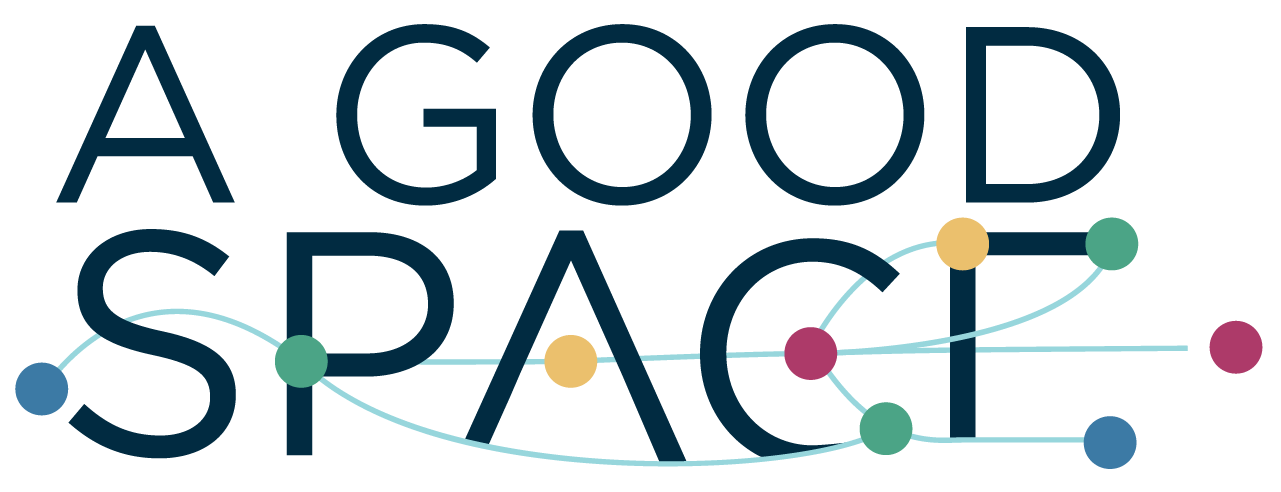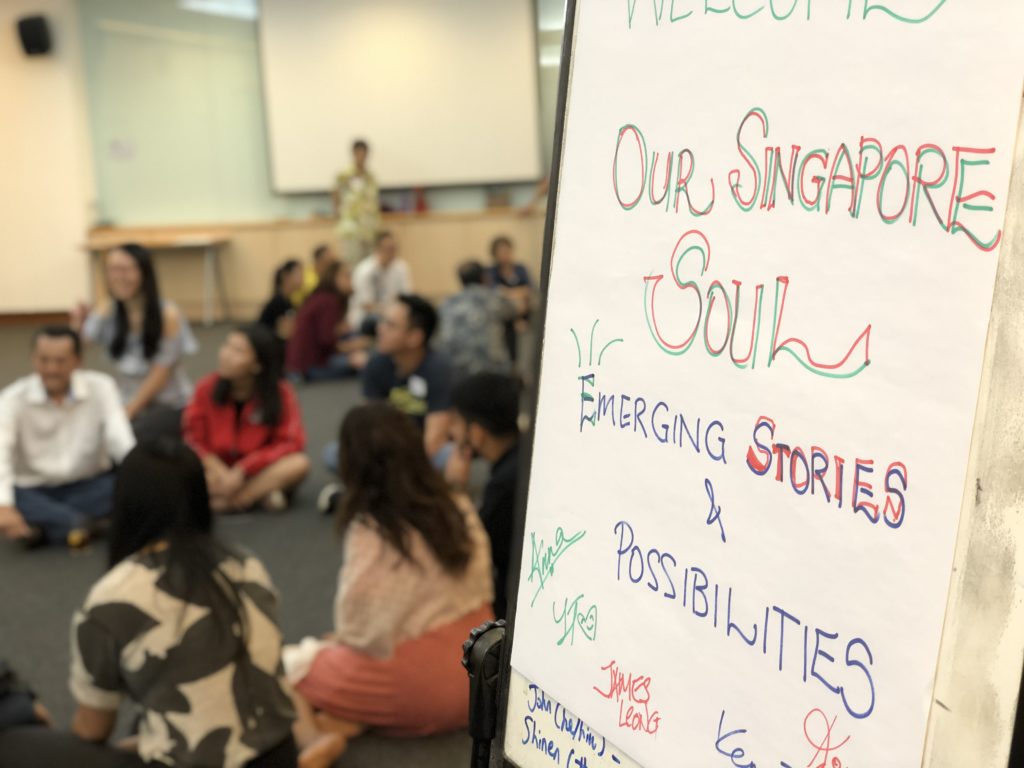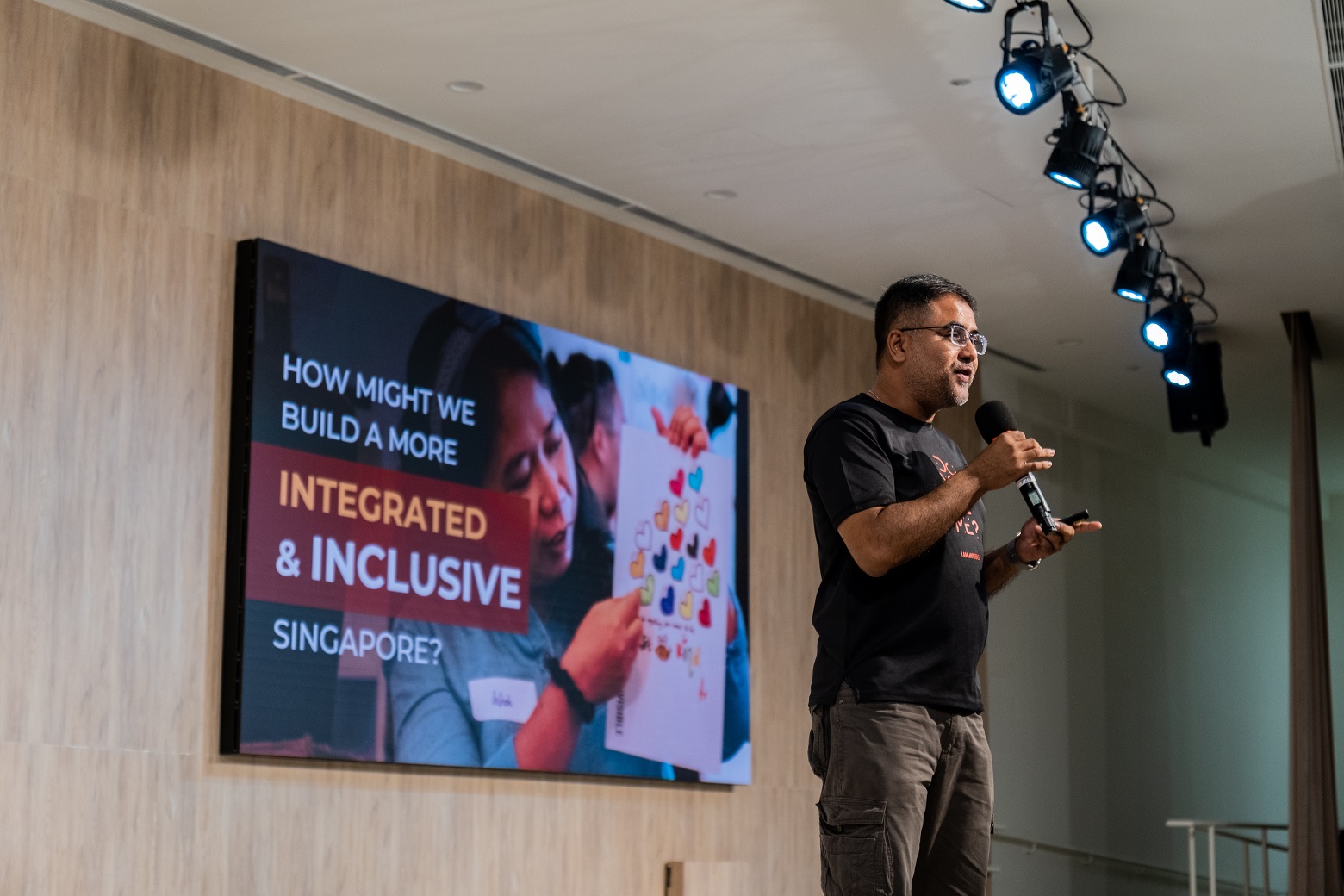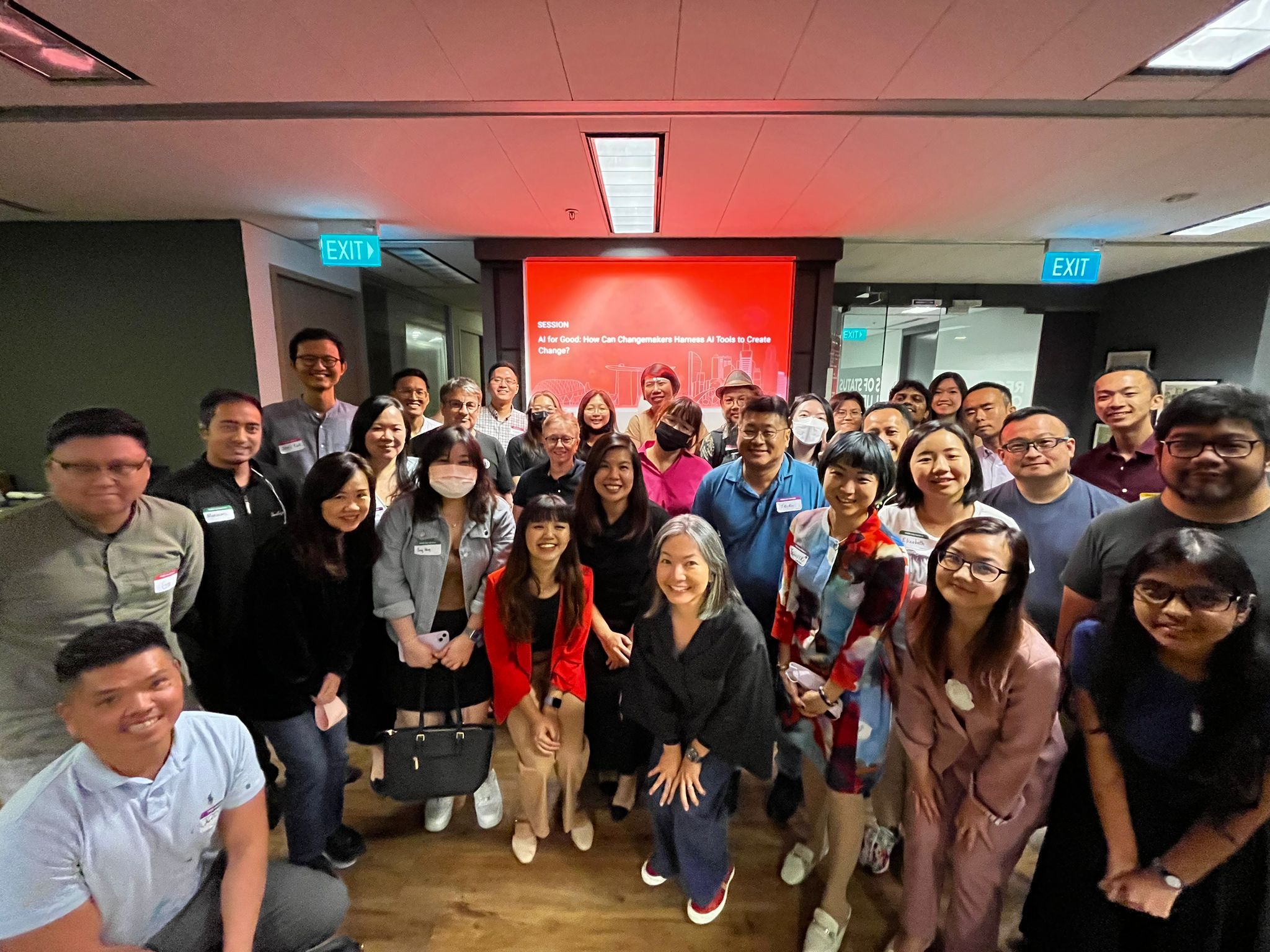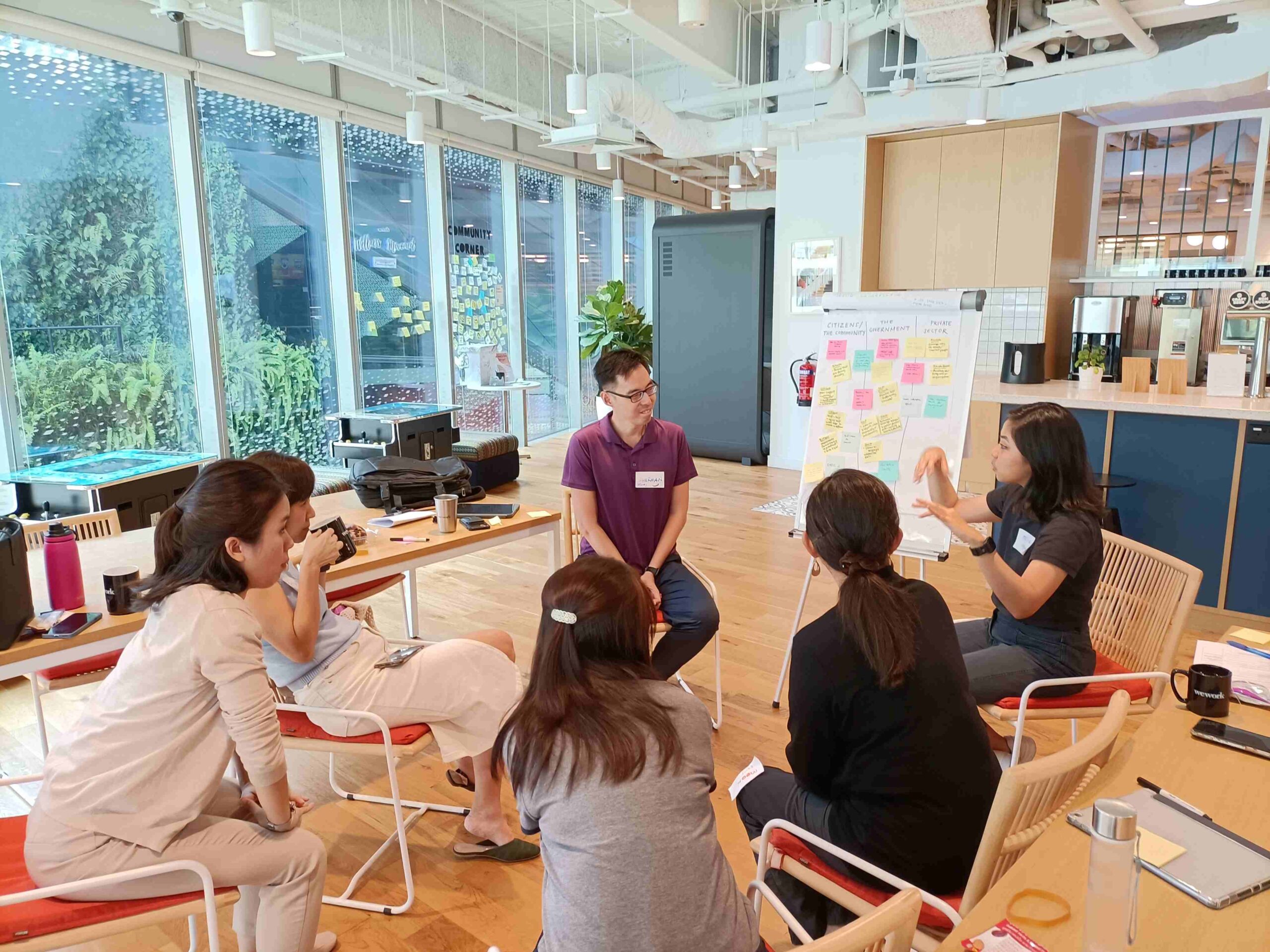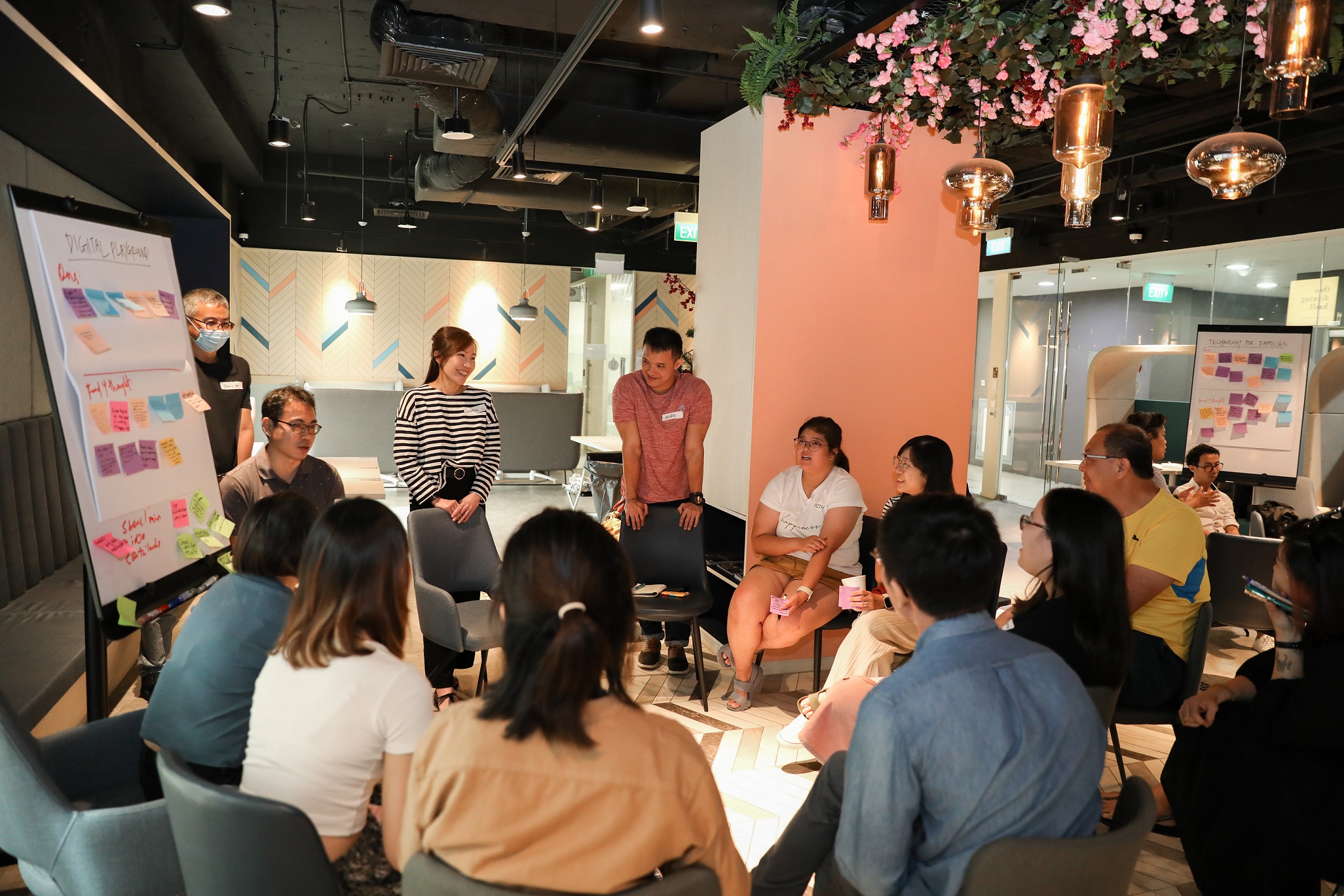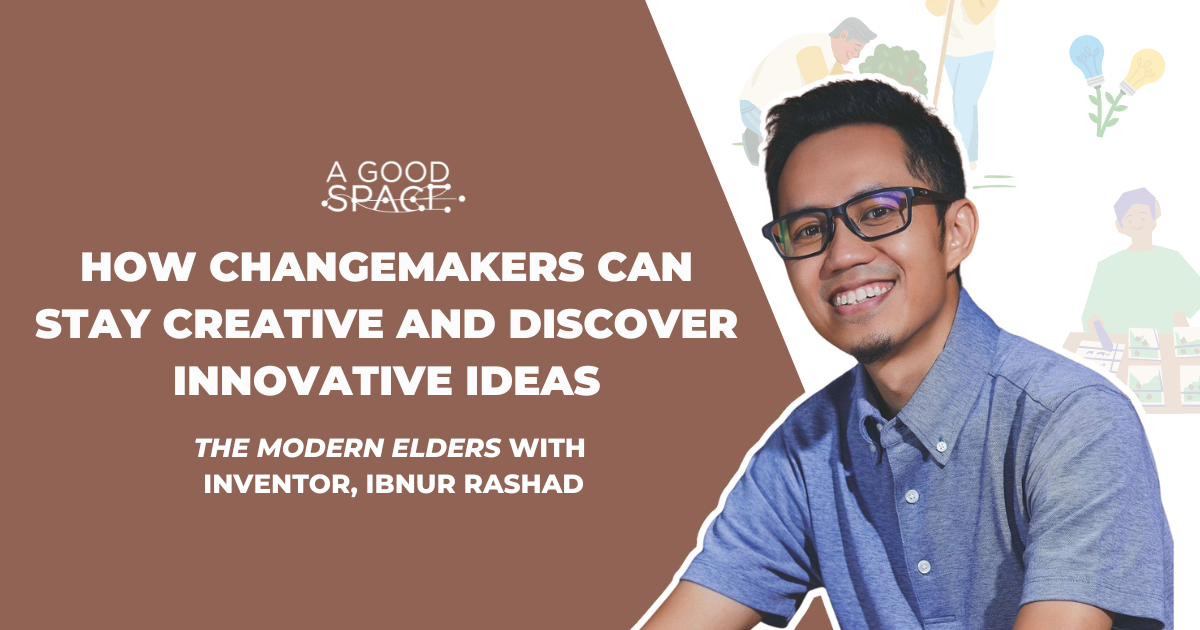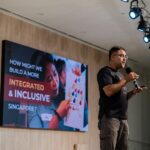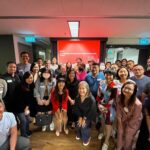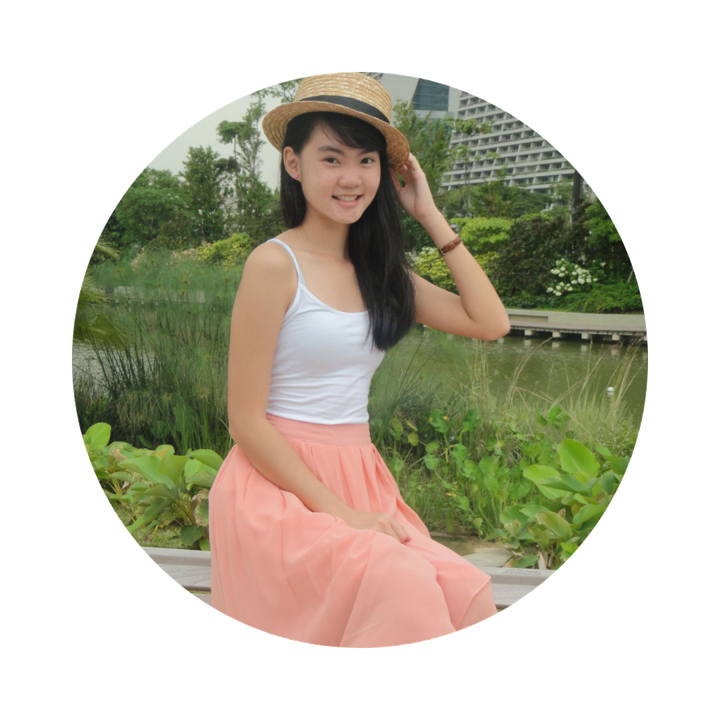What is the Singaporean soul?
What is uniquely us? What is core to our identity as an emerging city? And how can we find out?
On 4 May 2019, 50 participants came down to A Good Space at Clarke Quay Central, for an afternoon of discovery – To Unleash the Singapore We Aspire to be through New Stories and Possibilities. Our Singapore Soul: What makes us Singaporean?
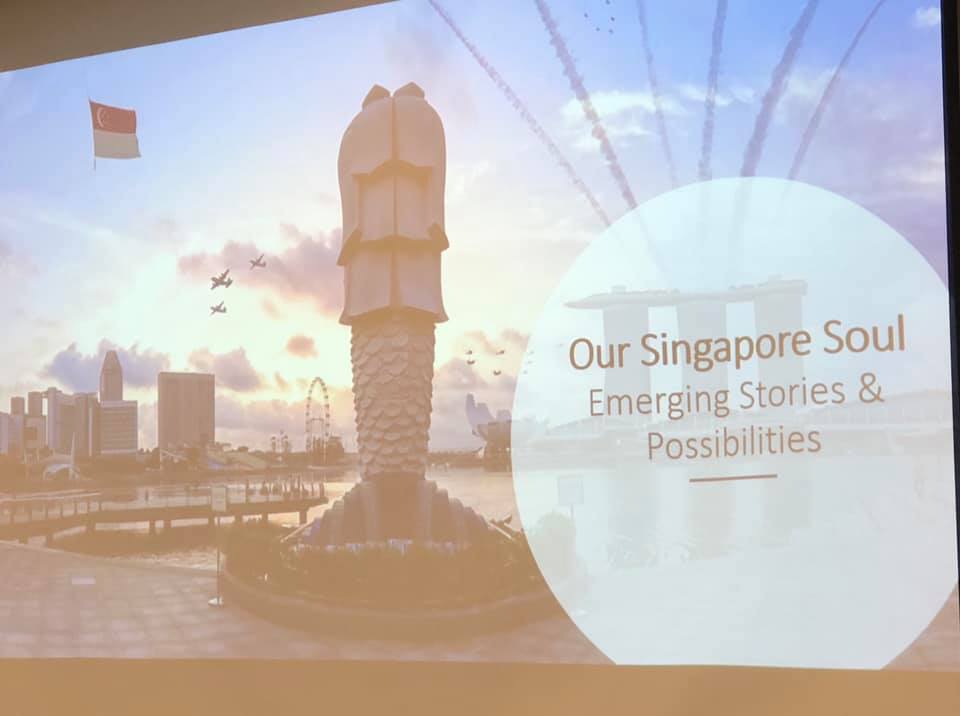
Members of the public were invited to participate and lead the change we want to see. It was an open call to be proactive in creating the change in Singapore, and join like-minded Singapore residents to lead small impactful change initiatives, through a format known as Social Presencing Theatre.
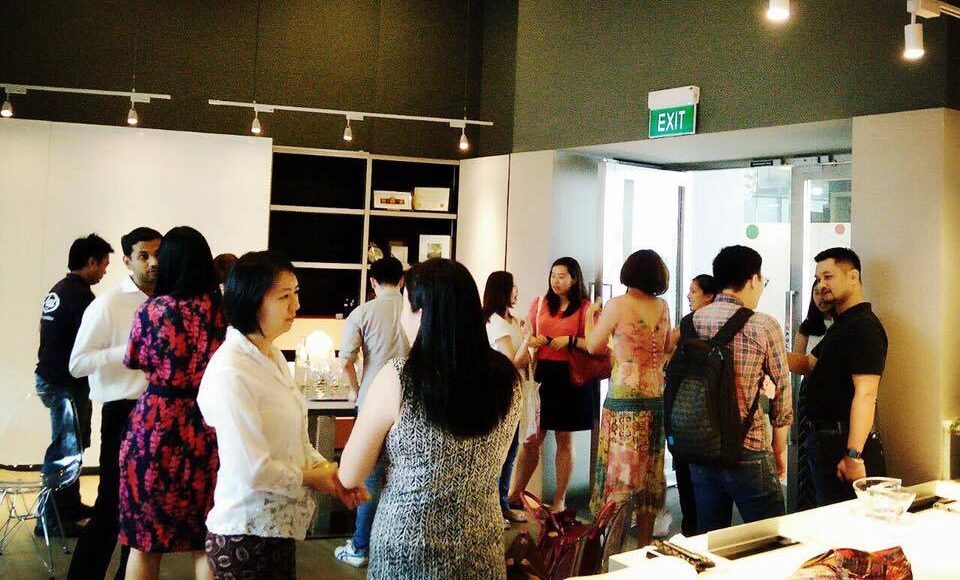
What is Social Presencing Theatre?
Social Presencing Theatre is a technique developed by the Presencing Institute. It involves making something significant become visible, thereby allowing a community of people to see a shared experience. Through the session, participants learn to apply mindfulness of body and awareness of the surrounding space, to embody what our reality looks like, and how it might look in future.
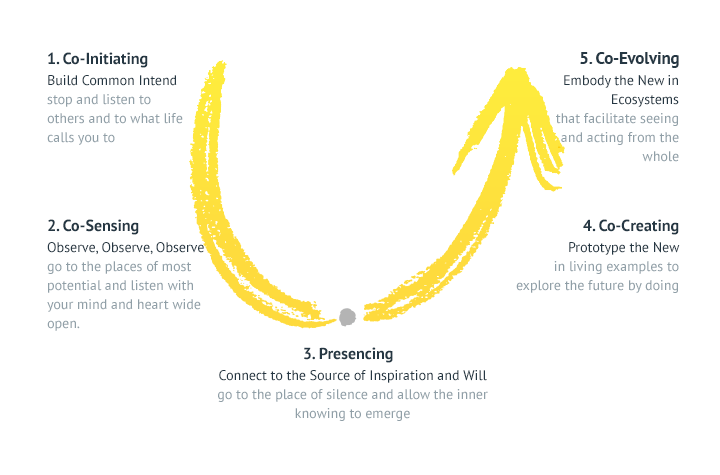
Social Presencing Theater enables one to experience the U journey of Theory U, a change management method designed by MIT professor, Otto Schamer.
In line with Singapore’s Bicentennial year, a group of 11 Singaporeans who were participating in the Societal Transformation Lab, a ‘transformation incubator’ which seeks to apply Theory U to co-create more sustainable systems worldwide, wanted to utilise Social Presencing Theatre to engage a diverse group of Singaporeans to explore what we want the soul of Singapore to be.
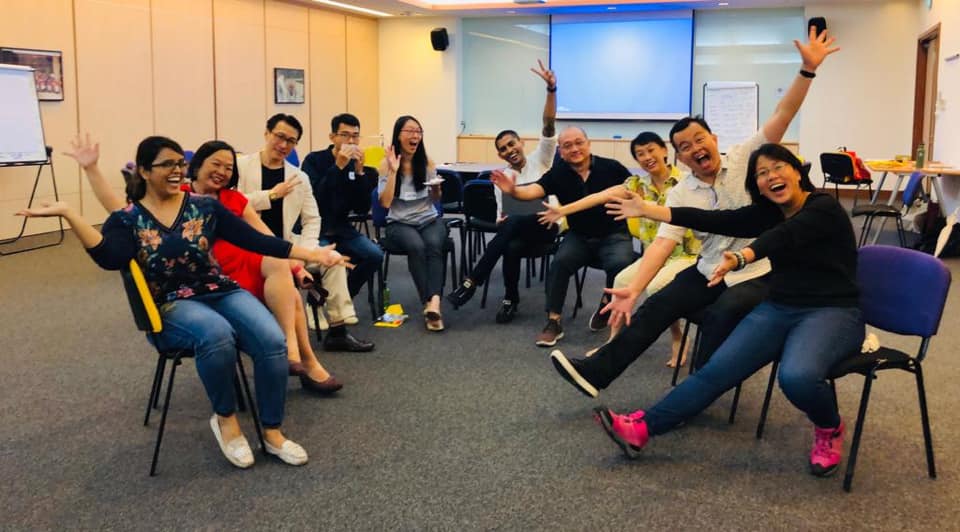
The Opening
The event began with an icebreaker and energizer, transitioning us into the alternate reality they were creating. First, the lead facilitator, Moses, invited us to share with a stranger what a soul was, and what we thought our soul looked like. Light chatter broke up the formal atmosphere, as we roamed around the room introducing ourselves and our souls.
Want to know how to invite authenticity? Read this: The Art of Gathering - Part 2
Next, David led the group in a mindfulness exercise to center us into the room. We focused on our breathing, and bringing awareness to our body and our surroundings.
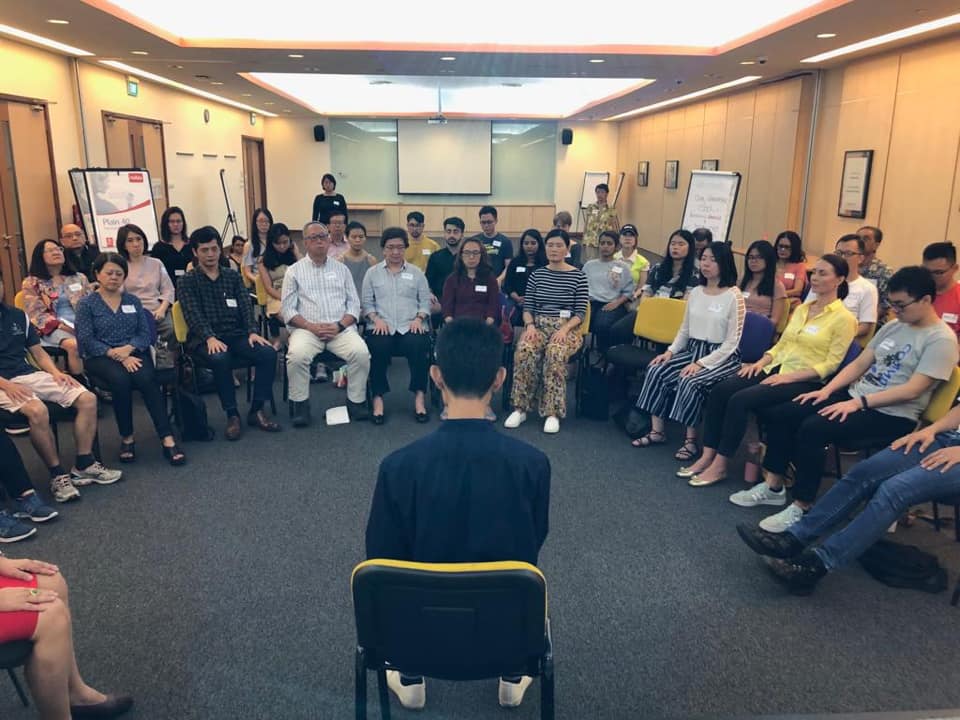
Then, we were broken up into 3 small groups. In these smaller circles, we were invited to introduce ourselves, and the gift that we brought to the circle. Some of us shared unique skills and perspectives, others shared traits like patience and empathy.
In all honesty, I didn’t feel like I had a place. As someone who had barely stepped foot into adulthood, still traversing through the educational system, I convinced myself that youths were part of this ecosystem in Singapore, and needed to be represented. While others shared their identities, experiences, I shared, unsurprisingly, my perspective from a youth, who wasn’t sure where she was going and was just starting out.
There was a diversity of people, with ages ranging from 18 to 78, and professions from housewife to professionals, corporate to social sector.
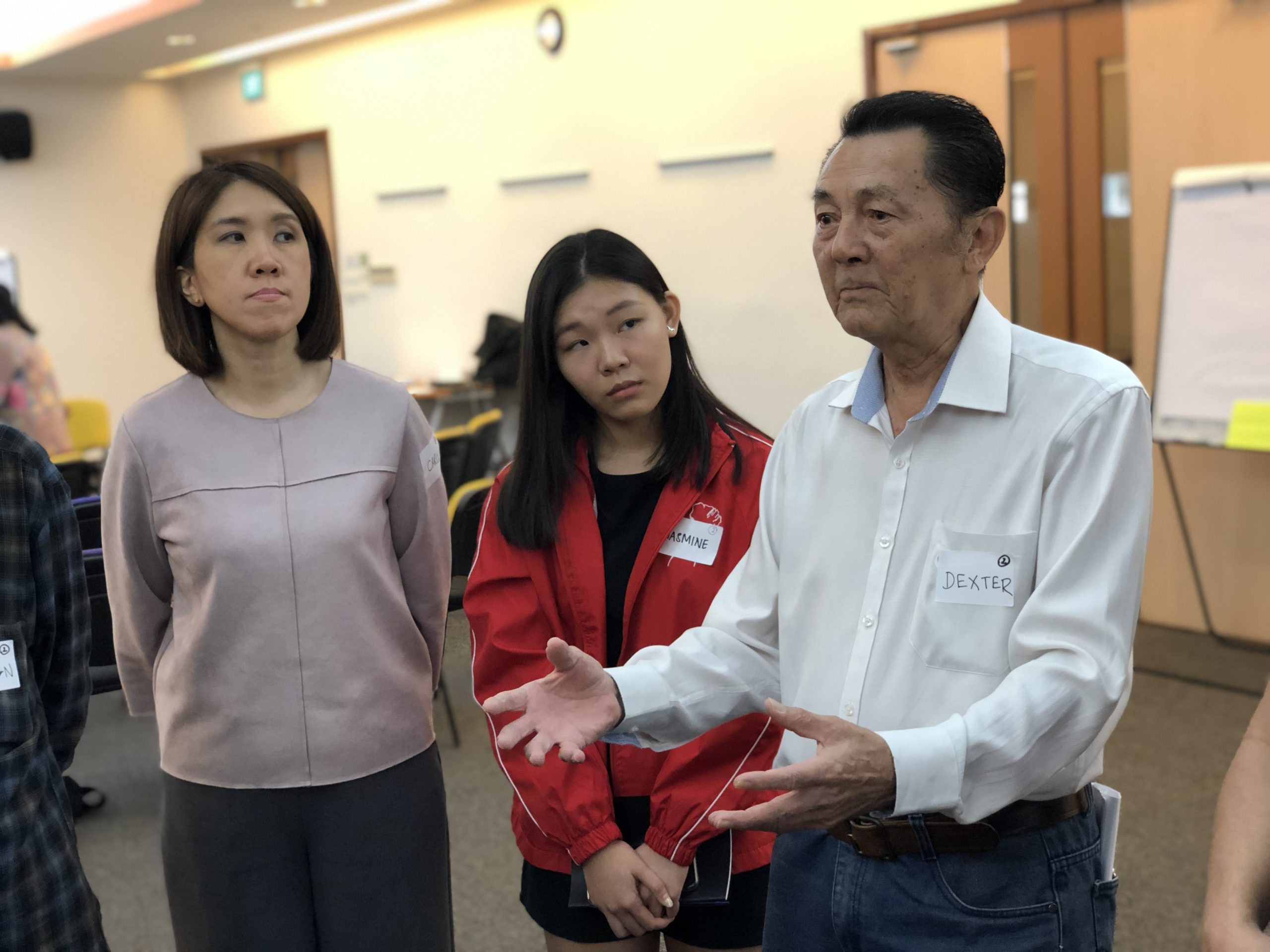
Current Reality Movie
In our small groups, our first task was to depict the Current Reality Movie. From its name, I expected to be indulged in a passive experience (think sit back, relax and enjoy).
Far from it, we were invited to take on the identity of a stakeholder in Singapore society, an identity that was not our own. We had to play someone else’s role, by literally stepping into the shoes of someone whom we were not.
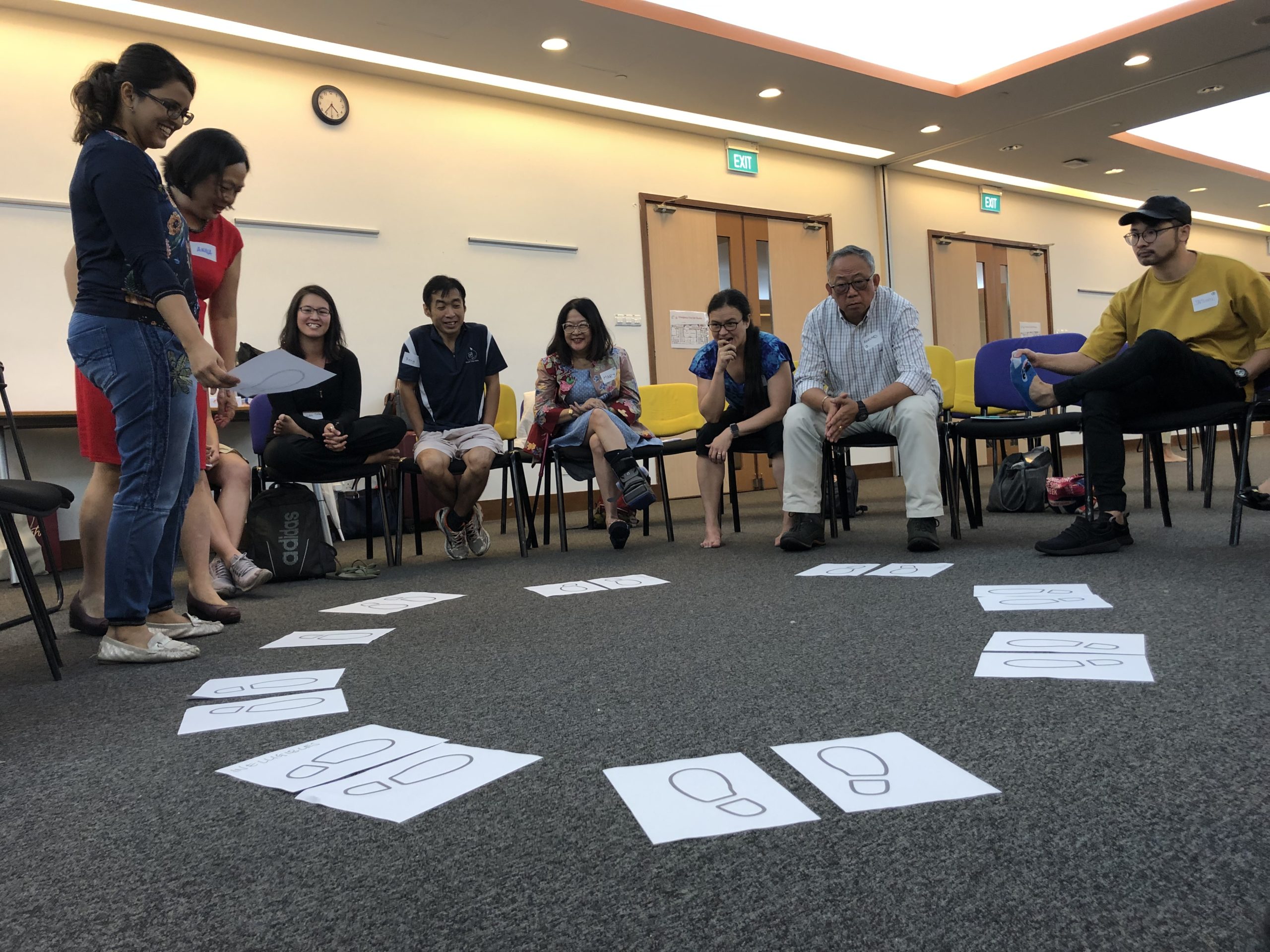
One by one, we took turns stepping into the circle and embodying the reality of the stakeholder we chose. The task was to choose a stakeholder we were not, portray the posture of how that stakeholder is feeling, and voice out a statement starting with “I”.
For example, someone embodying Nature might crouch down and say, “I feel abandoned and mistreated. I am in pain.” I, as a youth, could not choose to play the role of a youth, but instead must embody a different stakeholder.
Some stakeholders included the Government, Civil Service, Social Sector, Elderly, Young Adults, Middle-Aged, Children, Business People, The Ineligibles (the ones who were excluded by society), Nature and Humane Singapore (the ideal state that we aspire towards).
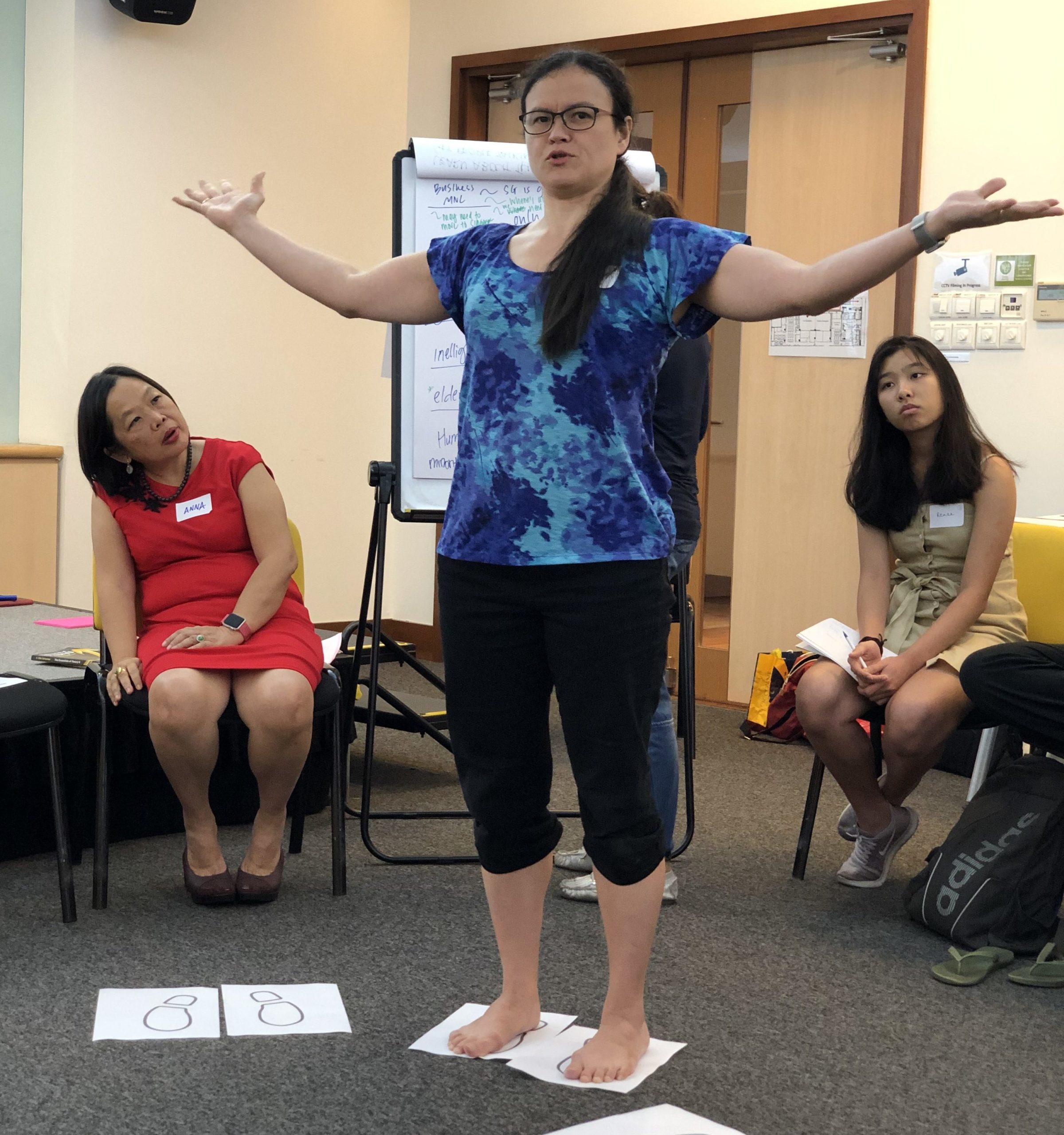
In my group, someone expressed his lack of confidence and increasing dissatisfaction towards the Civil Service. I thought it was interesting to see the conversation unfold between two individuals with very different, equally valid perspectives.
One: a member of our Pioneer generation, who had seen how rapidly and efficiently our country had transformed, and had enormous faith in the system and Singapore’s governance; the other: a returning Singaporean, now re-discovering a city he once knew, with a more cynical perspective of the way things are.
I enjoyed watching the facilitators in my group, Serene and David, artfully steer the conversation, gently probing participants to put aside their personal experiences and to put themselves in the shoes of other stakeholders.
Although the disagreement and discomfort expressed might have hindered the discovery process or compromised the safety of the space, I appreciated it. I felt that it depicted, quite nicely, how experimental events like these needed people who were resistant to show up – people who were hesitant to put aside their personal experiences and consider an alternative perspective.
For me, it was an accurate depiction of what this Singaporean reality might be, and what challenges we may face as we aspire towards an ideal reality.
Social Presencing Theatre
After the Current Reality Movie (CRM), we proceeded into the Social Presencing Theatre. Similar to the Current Reality Movie, we had to embody the experiences and perspectives of someone we were not.
However, instead of taking turns, Social Presencing Theatre involved creating an image together, with different stakeholders co-existing in the same space.
Sculpture 1
In the first reality, various stakeholders entered the Sculpture, finding a position and a posture that embodied what they felt their current reality looked like and again voicing a statement that started with ‘I’.
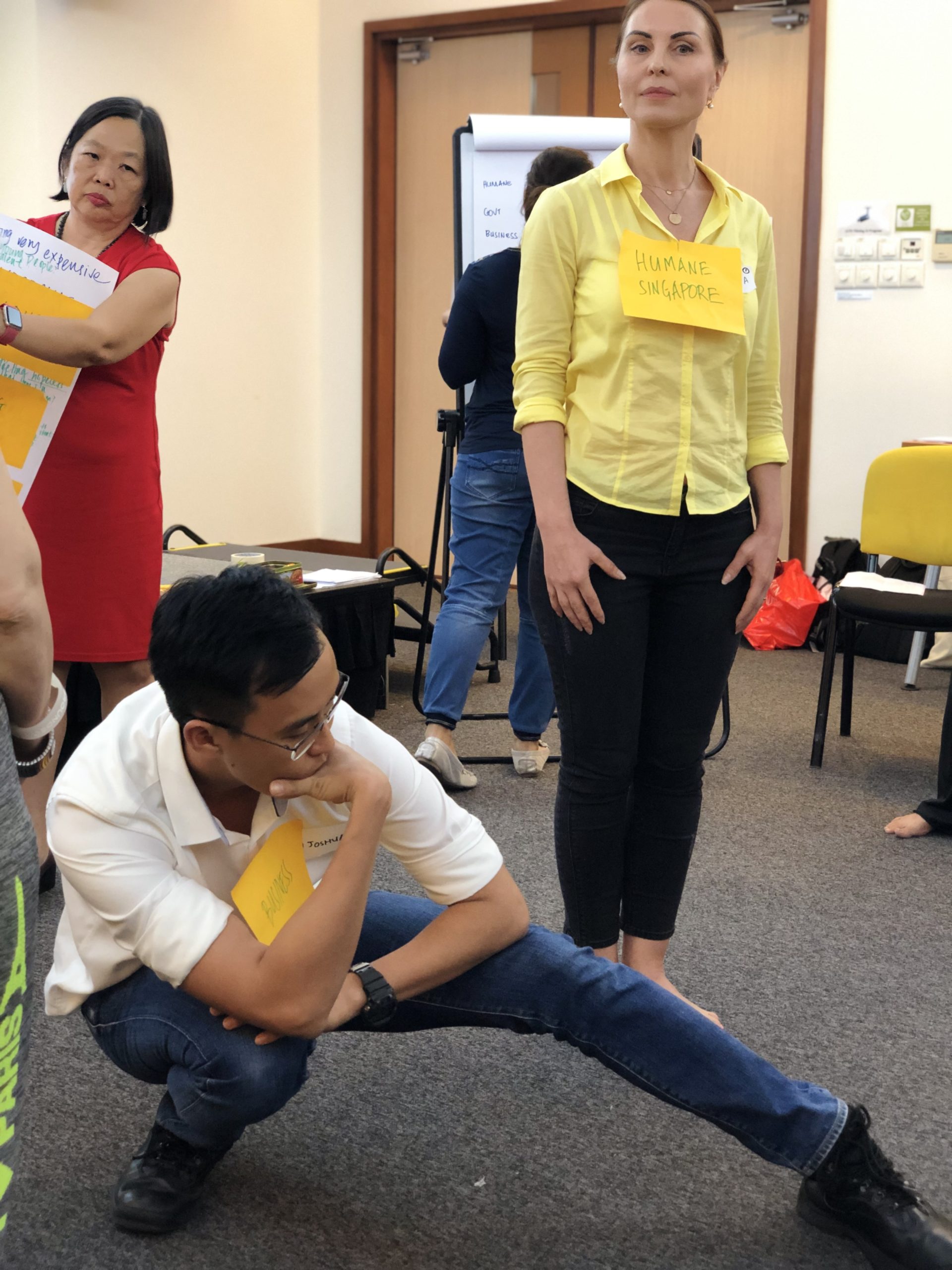
Watching Sculpture 1 in my group, there was a common sentiment of distress, frustration and lack of communication. Watching the evolution as a spectator provoked me to consider what society looked like today.
As each individual stakeholder stood alone, it appeared that we were all consumed by our individual struggles. We never looked to support one another, or to the future.
When Sculpture 1 was fully formed, with no other stakeholders joining the Sculpture, we took a moment to pause and process. Those who were not in the Sculpture were “space-holders”, holding the space for the Sculpture to take place, moving around the Sculpture as active observers.
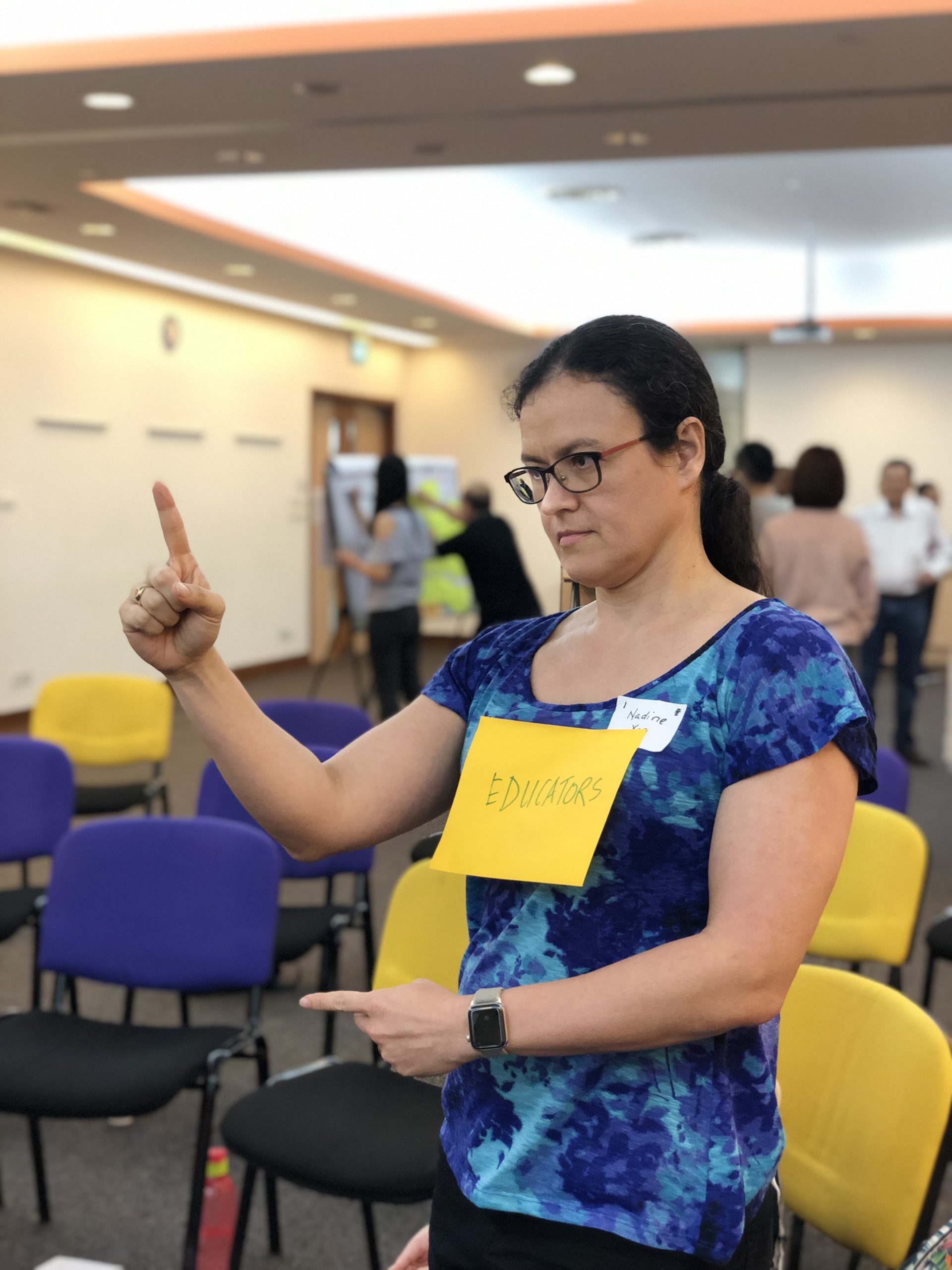
Sculpture 2
Then, my group’s facilitator, Serene, signaled to the group to move into Sculpture 2 – our ideal, emerging future.
As my group organically transitioned into Sculpture 2, Humane SG proceeded into the center of the circle. Initiating a chain reaction, elderly, young working mothers and the ineligibles came forward to join in.
It was almost as if everyone knew where they wanted to be, and was able to make clear choices to get where they desired – an ecosystem of stakeholders that recognised their intersections and the need to support one another.
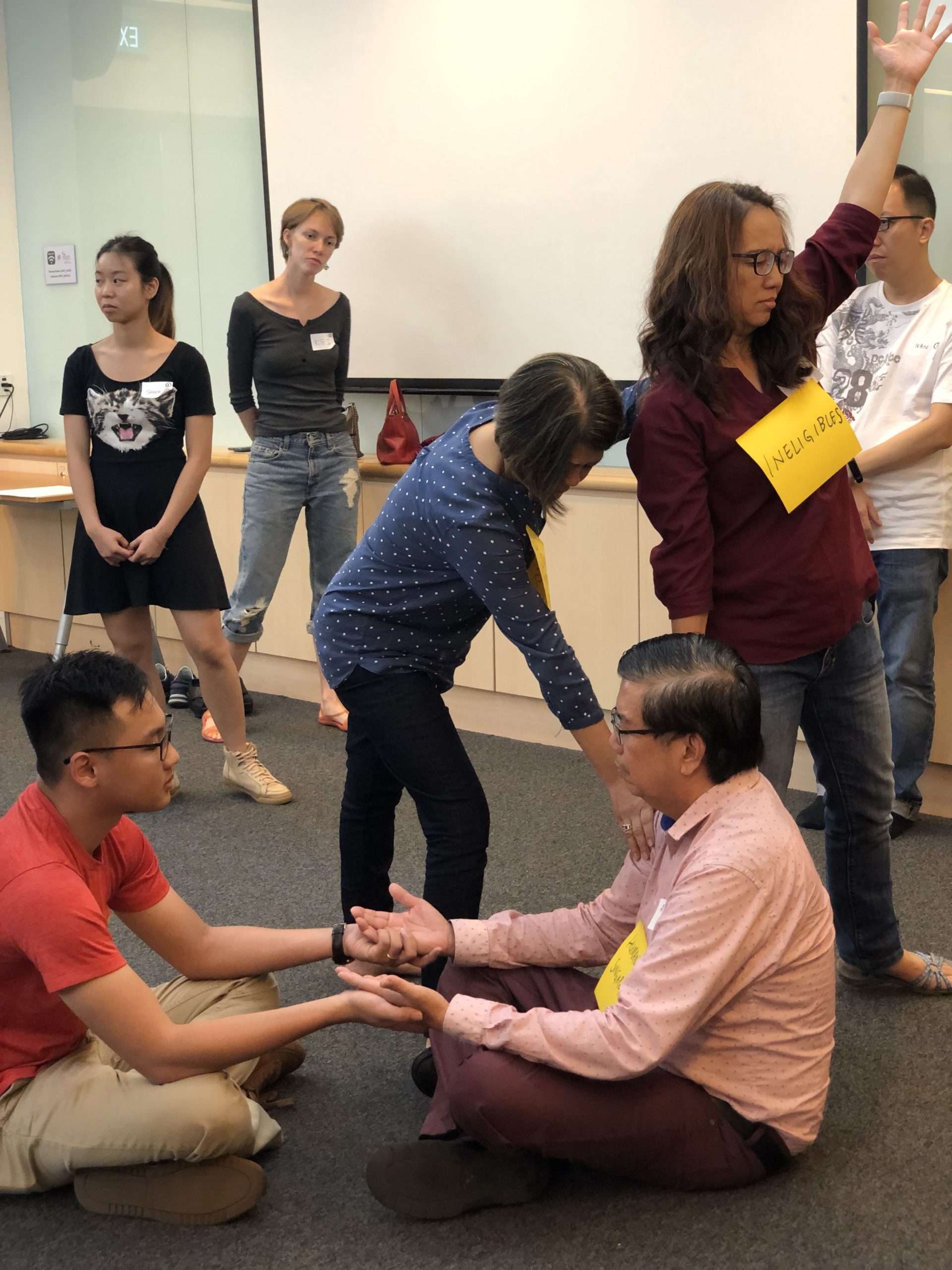
It appeared that our soul was restless – we were a society that understood what was wrong, and knew where we wanted to go. Yet as an entity, we weren’t sure how to get there – we were still battling the tightrope of conflicting agendas.
Closing
As we came together at the end, we shared candidly some of the insights we had gleaned. One thing that stood out across all groups was how governance and Humane Singapore played disparate roles in society.
It seemed that across all groups, people were seeing that subsequent changes we wanted to see in society no longer needed to be helmed by the government. Collectively, we wanted to take action and take things into our own hands.

In hindsight, I wondered about my own fear and hesitation towards participating in a conversation like this. As part of a generation that grew up with so much more access to information and knowledge, it feels like there is an expectation to start taking action at a younger age. Yet I often feel inadequate and unready to start.
I initially convinced myself that my presence added to the diversity of voices and plethora of experiences.
In retrospect, I do think youth voices are essential in such conversations today. I realised that youths, open-minded and still searching, were the impressionable and mobilisable group that would be the ones eventually shaping Humane Singapore.
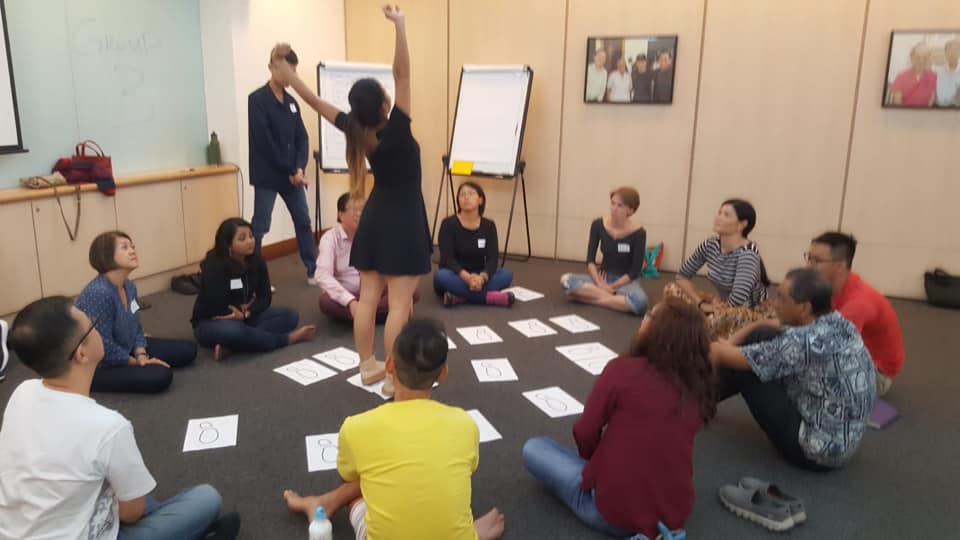
Depicting Humane SG, I was hopeful yet unsure. Immediately after, I felt naive, young and inexperienced. Yet, I was surprised that this particular attitude struck others to be inspiring.
Maybe it was this energy that a progressive society needed. Combined with the wisdom, expertise and experience of the older generations, this might put us on the right track to Humane SG.
My Reflections
The basic tools of Social Presencing Theatre – drama, movement, and body language – made it a simple yet effective format. It was powerful in a way that enabled diverse individuals to co-create and communicate, a form that was equally uncomfortable and familiar, equal parts daunting and simple.
Moreover, the invitation to be authentic in someone else’s shoes was rather poignant. The spontaneity of the exercise facilitated the honesty of our responses.
It was difficult to prepare what we wanted to say before we did. It took courage to start, but once I did, the words and movement came spontaneously, and I knew that I was being honest.
It was powerful in getting people to reflect on their own notions and perspectives, while revealing to others what was sometimes hidden from even themselves.
It was able to uncover dissent, frustration, issues and problems present in the community quickly and often elegantly.
I wondered if there was value and relevance in replicating this in other communities?
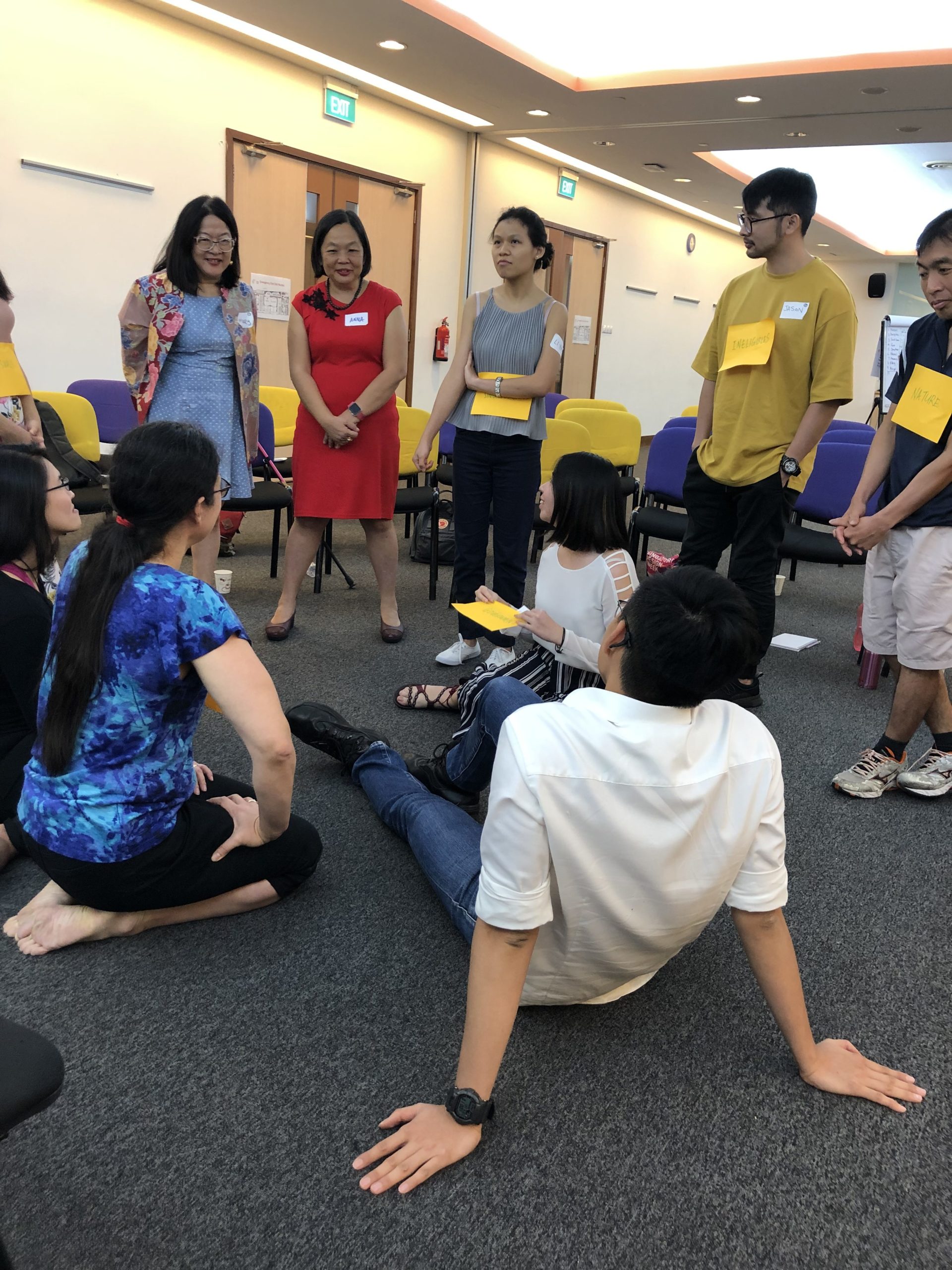
Could this be held in organisations and various communities by tweaking the stakeholders and questions?
Such conversations on the Singapore soul would enable people across diverse communities and social classes to uncover and discover for themselves what the current reality of Singapore might look like, facilitating a stronger sense of ownership and belonging, whilst gaining an insight into how our future might look.
What I particularly liked about this was its pure intention to uncover, without concrete actions or feasible steps, simply probing where we wanted to go.
What often causes us to detract from dream-building conversations is our tendency to let pragmatism get in the way of what an ideal society might look like.
We get bogged down by practicality that we fail to come close to imagining the ideal state. I appreciated a process dedicated solely to uncovering our core and revealing a collective aspiration.
As I left, I was struck by a feeling of wonderment. Somehow, it was clear that Singapore was far from its ideal state – an image that was created with and by individuals who were intrinsically tied to it.
A group of strangers, across all walks of life, eliciting the crux of the Singapore soul. Yet it wasn’t despondence we were left with at the end, but curiosity, intrigue, wonder and hope.
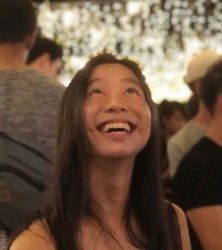
Oh Shu Xin
Shu Xin spent most of her time interning at A Good Space. She savours her rare moments of freedom, and spends 90% of it dancing, 5% of it eating, and the rest wondering (or wandering). She also loves talking to anything or anyone.
